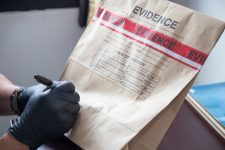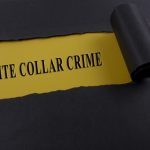Innocent Man Spends 22 Years in Prison Based on False Evidence

Kirk Odom was just 18-years-old when police accused him of a violent sexual assault and robbery of a woman in her own home.
Police approached Odom in the street and said he was the man in a police sketch. That drawing was based on a description by the complainant, who had only seen her attacker briefly and in the dark.
Odom immediately and emphatically denied any involvement in the heinous crime. He pointed-out that he didn’t look anything like the man in the picture. But police disagreed. They arrested and charged Odom, publicly declaring their success at finding the attacker.
Odom did not believe that he would ever be convicted of a crime he did not commit. He was sure that police would realise their mistake and that he would be released.
But the nightmare continued as the case proceeded to trial. In court, prosecutors produced their evidence: a hair found on the body of the complainant. The FBI ‘expert’ announced that he had used ‘microscopic analysis’ to compare that hair with a sample taken from Odom, and that they were an ‘exact match’. This was before the use of DNA technology.
This science was enough to convince the jury that Odom was guilty, and he then spent 22 years in prison. After serving his time, Odom spent nine more years on parole as a ‘sex offender.’
However, no statistics or data were ever recorded to demonstrate the accuracy of the ‘microscopic analysis’ of hair, which was merely a visual comparison.
It wasn’t until 2009 that the National Research Council of the National Academy of Sciences released a comprehensive report which proved that using ‘microscopic analysis’ to identify a person was unreliable, especially when it came to certain races such as those from parts of Africa whose hair samples were often found to be very similar.
But the FBI had been warned as far back as 1985 not to place too much emphasis on the technique. A 1985 US Bureau of Justice symposium explicitly warned against using hair analysis as evidence of a positive identification, recommending that the phrase ‘is consistent with’ be the strongest used in reports. Despite this, FBI experts continued to use the term ‘an exact match’ – which, in many cases, has proved to be very powerful before juries.
Indeed, such unreliable evidence has been used to ground hundreds if not thousands of convictions in the US alone. Between 1972 and 1999, the FBI ‘microscopic analysis unit’ employed 11 special agents who produced at least 2,500 positive hair matches used in criminal cases, many of which were the only real evidence used to convict defendants.
In April 2015, the FBI and justice department finally admitted they had been using flawed testimony in almost all criminal trials where its agents were involved – and nine people had already been executed following trials where ‘microscopic analysis’ of hair was used as the main evidence for the prosecution. A further 23 defendants still sat on death row at the time of the announcement.
When a Guardian journalist asked the FBI whistleblower why he thought the FBI persisted in using dodgy science, he replied: ‘It got convictions.’
DNA evidence proves innocence
Fortunately for Odom, his case came to the attention of criminal defence lawyer Sandra Levick.
Levick had already helped to overturn the conviction of another man who had spent 28 years in prison for rape and murder. That man had also been convicted using ‘microscopic analysis’ of hair samples.
Levick looked into Odom’s case and saw that his conviction was entirely based upon unreliable evidence. She approached Odom and asked if he wanted help to clear his name.
Levick worked tirelessly to track down decades-old evidence – most importantly, the hair that had been used to convict Odom and the complainant’s semen-stained robe. DNA tests on the semen proved that Odom was not the culprit.
Odom was exonerated on his 50th birthday in 2012. He was so excited when he heard the news that he screamed out loud. But while it was a great moment for Odom to be formally recognised as innocent, nothing can make up for the ordeal of spending half his life under the shadow of a false conviction. Odom spent his 20s and 30s behind prison walls, where he was forced to spend his early adulthood. He missed many things in life, including seeing his infant daughter grow up.
Odom wants his story told in the hope that it will help others who are in similar situations. He also wants an apology, which has not been forthcoming from anyone involved in his investigation or conviction.
But Odom is not an isolated example. The Innocence Project has uncovered many similar instances of unvalidated hair analysis, and there are many other forms of unreliable evidence used to unfairly convict people.
Research has revealed that ‘bite mark analysis’ and ‘shoe print evidence’ have been used as the primary evidence to charge and convict dozens of people. Voice comparisons by use of a spectrograph have also been used to convict, even after such evidence has been proved time and again to be highly unreliable.
Science in Australian courtrooms
Scientific evidence can be extremely powerful when it comes before juries. As seen in the case of Odom, a single hair and a bit of ‘science’ was enough for a conviction.
Australian juries love science, and studies have even shown that juries in NSW are far more likely to vote ‘guilty’ where forensic evidence points towards guilt.
That study revealed that in five times out of six cases, there is only one forensic expert who guides the jury through the evidence – and that expert is on the side of the prosecution. Unfortunately, many defendants simply cannot afford the cost of an expensive expert witness, which leaves the prosecution evidence uncontested.
The Innocence Project
As discussed in several of our previous blogs, whereas wrongfully convicted defendants in the US and UK have access (albeit limited access) to various organisations and mechanisms to prove their innocence, Australian defendants do not fare so well.
Indeed, the Howard government cut all funding to Innocence Projects during its tenure – which is an indication of where we rank when it comes to the importance of finding the truth.






